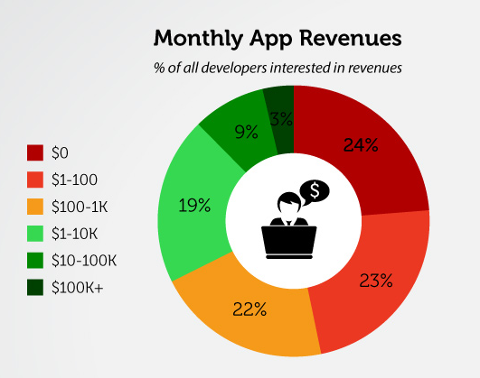Google Play is outpacing Apple’s App Store when it comes to worldwide app downloads, according to
new data from App Annie. Google Play downloads increased 20 percent year-over-year, exceeding App Store downloads by 160 percent. Indonesia and India, two huge markets for Android, helped drive that growth. Despite that rise in Google Play downloads, however, Apple’s App Store triumphed when it came to overall consumer spending. Apps—especially sports apps—helped spending in the App Store increase by 20 percent year-over-year, outpacing Google Play by 80 percent. These trends aren’t new, but they do emphasize some lessons for developers. Among them:
Know Your Market
If you’re building for an international audience, always keep Android in mind. Although the iPhone maintains a strong presence in the U.S., Apple has wrestled with penetrating other markets,
including India. Building for Android ensures your access to a massive install base around the globe.
If You Want to Make Money, Think iOS
As shown by App Annie’s data, iPhone users like to spend money. If you enjoy the prospect of actual revenue in exchange for your hard work, consider building your app for iOS. Many developers have managed to profit off a subscription model,
which Apple is actively pushing. Making apps free to download, and then charging for micro-transactions, is also a pathway that many are exploring—although some users’ patience for this model is
apparently wearing thin.
Build for Both Platforms—If You Have the Resources
If you want money and reach, consider building for both iOS and Android. That’s easier said than done, of course, especially if you’re part of one of those development shops that is perpetually short on time, money, and other resources. In order to facilitate cross-platform development, you could always rely on a cross-platform framework such as React Native. However, it’s clear at this juncture that both Apple and Google
are cracking down on the use of third-party cross-platform frameworks, requiring developers to build native. According to recent data from
AppFigures, the number of iOS and Android apps built via non-native tooling has fallen considerably since 2016. If you know your market well, you can roll the dice on either Android or iOS; but if you have the resources, you can’t lose building for both, even if you have to resort to using each app ecosystem’s tooling.


